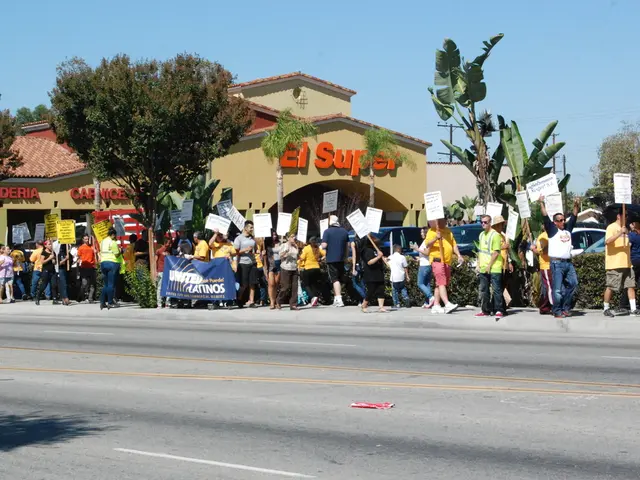Southern California Fire Risks Monitored by Innovative Technology
AlertSoCal: Revolutionizing Wildfire Response in Southern California
The AlertSoCal system, a groundbreaking public safety program led by UC San Diego, is transforming the way wildfires are detected and managed in California, particularly in Southern California[1][5]. This innovative system deploys over 1,100 high-definition, AI-enabled cameras across the region, aiding firefighters in early detection and effective wildfire management.
The system's key strength lies in its ability to monitor vast backcountry areas 24/7 using pan-tilt-zoom cameras with near-infrared night vision. These cameras are capable of 360-degree sweeps every two minutes and have a visibility range of up to 60 miles by day and 120 miles at night[1].
Artificial intelligence plays a crucial role in AlertSoCal, rapidly analyzing live feeds to identify new fires early. In 2024, the system detected more than 1,600 fires, often faster than traditional 911 calls[2][5]. This rapid identification enables precise fire location information to be provided quickly to firefighting authorities, enabling a fast, confident response.
The system also supports data-driven decisions with advanced cyberinfrastructure managing and visualizing the massive data stream from the cameras. This helps to prepare for, respond to, and recover from wildfires effectively[1].
The AlertSoCal system is a collaboration between the Scripps-based High Performance Wireless Research and Education Network (HPWREN) and the Nevada Seismological Laboratory. The HPWREN network includes over 64 fixed mountaintop cameras positioned in 16 remote locations across San Diego, Riverside, and Imperial counties[6].
In Southern California, AlertSoCal operates in critical fire-prone regions, including Toro Peak in the Santa Rosa Mountains and Lyons Peak in southern San Diego County. The system is designed to transmit real-time information to incident command centers and fire stations for enhanced readiness[4].
UCSD's San Diego Supercomputer Center and California Institute for Telecommunications and Information Technology support the high-bandwidth wireless data network in hard-to-reach areas. The AlertSoCal system is a part of a network that provides high-speed networking capabilities to support research, education, and public safety efforts[6].
The AlertSoCal system is a complement to the AlertTahoe and Nevada Bureau of Land Management fire camera systems run by the Nevada Seismological Laboratory at the University of Nevada, Reno[7]. This multi-hazard system, which also includes the Scripps-based HPWREN communications infrastructure, is used for real-time observations of earthquakes and extreme weather.
The AlertSoCal system benefits the university through research and education opportunities. The public can also access the online hazard alert system to view weather conditions at remote locations in Southern California and participate in early fire detection[3]. In essence, AlertSoCal is a 21st-century version of crowd-source fire-tower observers, providing a virtual fire lookout tower equipped with real-time and on-demand time-lapse imagery[3].
Given the increased wildfire activity and longer fire seasons in Southern California due to extreme drought conditions, warmer weather, and more frequent Santa Ana wind events, the AlertSoCal system is vitally important[2][3]. This cutting-edge technological approach is viewed as essential to changing wildfire response in Southern California by enabling near-instant alerts and enhancing situational awareness for fire crews, reducing fire spread and damage.
Read also:
- Renewable marine fuel with a reduced carbon footprint will be supplied by Seaspan, a newly-established collaborator in the climate movement.
- Anticipated Arrival of Additional 150 Electric Buses by BVG Next Year
- ChatGPT Transforms into an Intergalactic Tour Guide in the Sequel: Part 2
- Commemorating Hiroshima and Nagasaki: A Reflective Look Back at Nuclear Disasters








